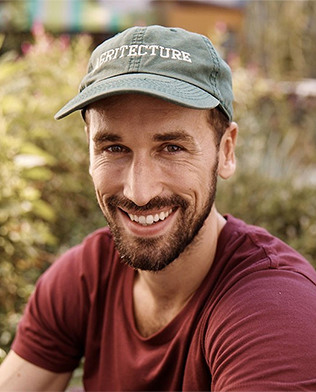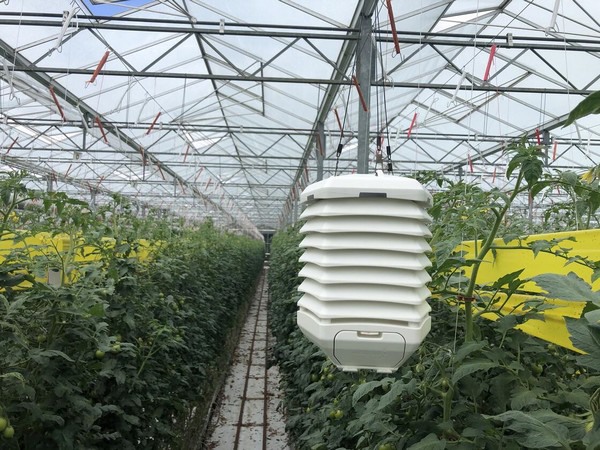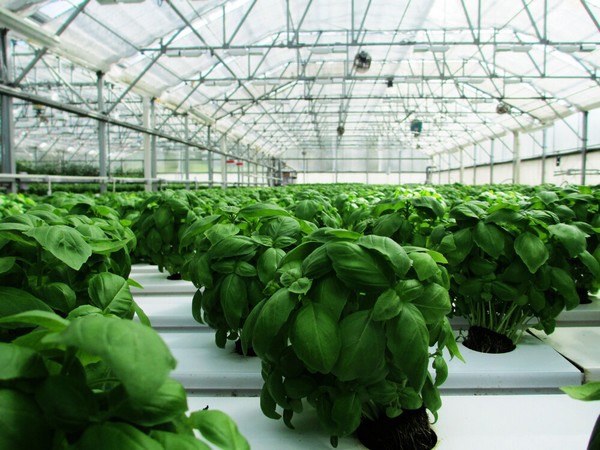In a normal year Henry Gordon Smith, CEO of consultancy firm Agritecture and Darryn Keiller, CEO of technology company Autogrow would have met up quite a few times and would have discussed the challenges and developments of the industry regularly. This year though everything has been different – like it has been for everybody – but despite all of that they are positive for 2021. “The energy and the enthusiasm for CEA has not slowed down whatsoever – on the contrary. It feels like 2021 is going to be huge. We’re on track for the big boom of CEA.”

Transparent challenges
“2020 has had its own challenges for everyone. What’s interesting is how the industry has responded. At first the greenhouse industry, and mainly the US and Canada, had to deal with social distancing, getting their staff together and, particularly in the US and Canada, COVID outbreaks amongst labor force,” Darry Keiller, CEO with Autogrow, says when asked about 2020 in the horticultural industry. “At the same time and due to the COVID outbreak, 2020 is also the year the challenges we’ve all been talking about in the food industry became transparent to everyone in the world: the reliance on immigrant labor, the importance of food safety, the vulnerability of transportation and logistics,” he sums up.
“COVID has further demonstrated the benefits of CEA by exposing the fragility of the food system,” Henry Gordon-Smith, CEO with Agritecture, adds. “In India for example there have been experiments with high-tech CEA – now the full force of the government is getting behind it. For the Middle East it’s the same: the second wave of funding and the support for innovation in farming is up and running.” Being located in Dubai, he’s seen the demand for consultancy grow in countries like Oman. “There’s new programs and tenders. In Saudi there’s a big push for greenhouses and vertical farms, Qatar has recently published tenders for vertical farms and the UAE as a whole is continuing to push money and policy in this space. Before not many stakeholders might have been convinced, but now they see that its the right time for vertical farming especially.”

Darryn Keiler, CEO with Autogrow
Massive explosion
“If it’s indoor farms, tunnels, high tech greenhouses – it doesn’t matter,” Darryn adds. “We’re expecting a massive explosion in CEA for the upcoming years. 2020 has already seen memorable events – if we only look at the reversed IPO of AppHarvest, the first time that a high-tech greenhouse company has gone public this way. But it’s not just the big guys and the megacompanies - there’s more going on: from Florida to the North East there’s a higher demand for lettuce greenhouses and even though people might feel as if this is old news, it’s still the idea of localized food production that is the driving force behind these initiatives.”
Henry adds how COVID again has played an important role in this. “Before many CEA farms were seen as expensive and suitable only for supplying restaurants. Then COVID happened and even though the restaurants shut down, these farms were quicker to adapt, to change their distribution models and to focus on shipping directly to consumers. By focusing on local customers, the CEA farms suddenly had an advantage in being local and in being able to adapt more easily than the large growers. For the vertical farming industry that’s an interesting thought – the adaptability of the food value chain will be a strong part of the road to food security when other shocks occur in the years to come.”
 Henry Gordon Smith, CEO with Agritecture
Henry Gordon Smith, CEO with Agritecture
Remarkable is also how the people behind these projects have nothing to do with traditional growers and farmers. “There’s many young people – millennials, GenZ – you name it. After seeing the need for local food supply, they’re the driving force behind this second wave of interest around indoor farming,” Darryn says and points at Henry, who started as a blogger for the vertical farming industry ten years ago and added consultancy to the business in 2014, to guide these ‘newbies’ in the industry. “Based on the 2020 Census 49% of the respondents in our industry have zero experience in growing,” he laughs. “But it’s different than before and they’re challenging us as consultants as well. The general knowledge on CEA increased and so have higher expectations. Even though they have no experience, still they are more educated than many of the people entering the industry before. They understand what vertical farming is, that leafy greens are the most important crops and why some crops can’t grow inside. And they want more: more than traditional growers, they’re eager to learn. The archetype of many traditional growers is still that the way they work is how it should be done and often they’re not open to change. These newbies are open to new things, yet they don’t need to know all parts of growing, they prefer to make use of the techniques relevant to them,” he explains.
Baseline understanding to accelerate growth
As an answer to these people, Agritecture this year released software “Agritecture Designer” allowing growers and investors to check what they’re getting from their business plan and their investments. “Technology companies use it to check their own products, growers to check their farm yields. Our goal with it is to create a baseline understanding of growers to further accelerate growth,” he says. “These new entrepreneurs don’t want to be a grower, they want to be the Elon Musk of their food adventure – build a successful, profitable business. With this eagerness, they’re pushing the industry to move forward: they want high-tech, they want an investible project, they want to differentiate in strawberries or mushrooms and they want the data. Actually, they want all of it because they know it is possible. And that’s pushing us as consultants as well to develop continuously.”
It’s not only new growers and investors entering the industry. “We’re still seeing ourselves as a young company,” Darryn adds – the original Autogrow business began 27 years ago but in 2014 began to expand into software platforms and cloud-based technology including the launch of FarmRoad and Folium Network Sensors “Now all of a sudden there’s a raft of other guys springing up all over the place I don’t think that’s an accident: those founders must have seen what we saw: a transformation in the industry and an opportunity to contribute to that.” He explains how that’s indeed how they look at these developments – not as a threat but as help to lift the digital tide. “If more players talk about using data and platforms to help growing, it can help the industry move away from the old, mechanized way of farming.”

Wireless smart sensor Folium
Data-driven growing
The shift to data-driven growing is not only happening in new markets or new companies. Also existing associations are looking for ways to catch up. “Egypt and Morocco for example,” Henry gives as an example. “We’re seeing both governmental initiatives as companies trying to catch up. What they’re looking for is not only the technology we have, but the knowledge that can be offered. They’re understanding that’s valuable and that moving farming forward is also something what they are paying for.” Darryn adds how also new generations are following up their parents in existing companies – with often no intention to follow the same strategy as their parents did. “They’ve studied and have grown with new techniques including AI and data. They want to know how these new forms of technology will help the industry and their company move forward.”
“The long-awaited shift from the old way of farming is going to be a big feature in 2021,” Henry concludes. Does this mean both Agritecture can sit down and relax with customers showing up, and Autogrow can wait for their products to sell themselves? Unfortunately not. Back in spring Agritecture lost about sixty per cent of their consulting business and significant challenges lasted until November before the company had a positive revenue again. “Still we see the momentum and believe in building the market place. We’ve launched a digital product in April and have our first 2000 users and are getting amazing testimonials, we’re about to beging fundraising for the next stage of our software.”
“With the borders closed, Netherlands in a new lockdown, all the trade events shut down, the situation remains challenging,” Darryn confirms. “Connecting with customers has become harder in 2020, we have to hustle more now.” Being based in New Zealand and having customers all over the world means the usual challenges with different time zones but it’s what everyone needs to do in this new normal. Convinced the situation will not change any time soon, the company has rapidly expanded their presence all over the world. “It’s a high-risk play, but we hired 15 people in the last 12 months. By being present in Europe, in Asia, in America we are in a better position to support our customers and also learn from their challenges."

Digital twin
And there’s more to come in 2021. “Of course there will be super advanced stuff coming out,” Darryn laughs and although not all of it can be revealed yet, he explains how the creation of a digital twin for greenhouse crops will be a new tool in the road to the autonomous greenhouse. “But that’s for the long term – for now it’s technique and software helping the industry to grow. Together with the industry, we’re on track for the big boom of CEA,” he says and Henry adds how it’s one they didn’t expect to happen this way per se. “We always knew CEA was getting bigger, but thought on droughts, climate change and food safety to steer this. We didn’t expect the pandemic to be the next big driver, but it feels like next year is going to be huge.”
Annually Autogrow and Agritecture release a Global CEA Census report, an in-depth global survey of indoor & controlled environment agriculture. The insights discussed in this article can be read in the greater perspective in the second edition of the Global CEA Census Report, that was launched early December. Click here for more information on it and a free download of the report.

 For more information:
For more information: Agritecture
Agritecture